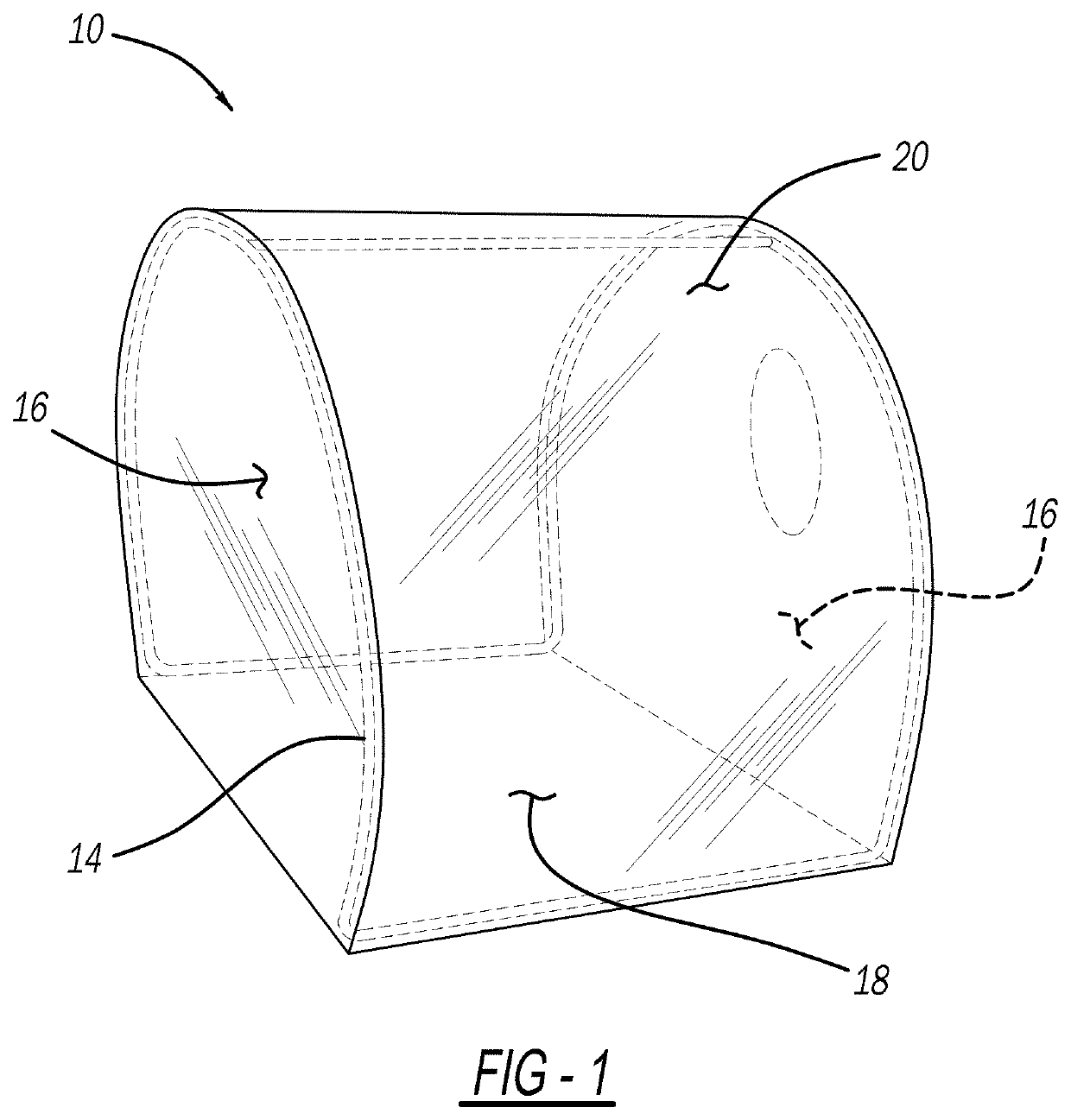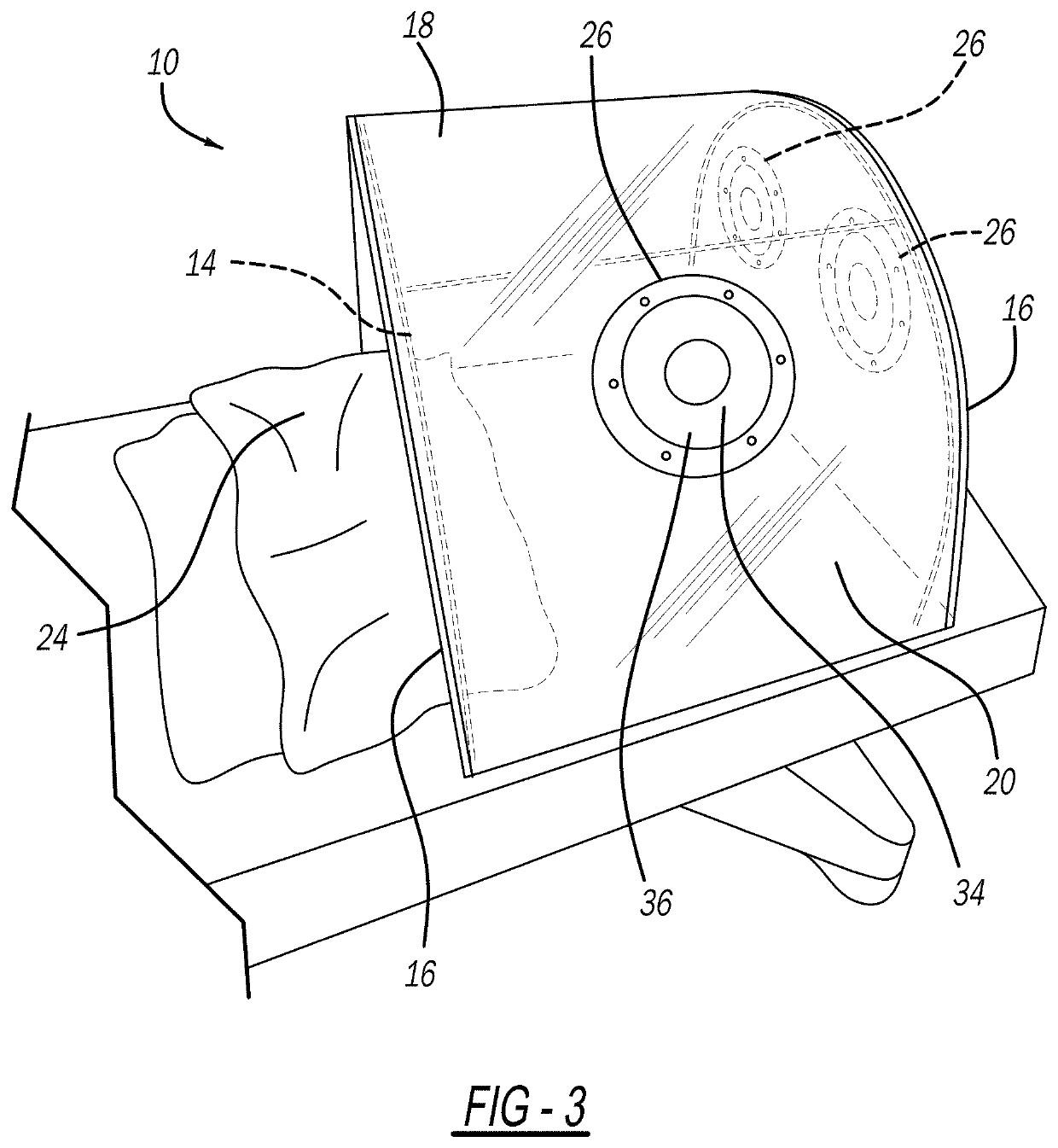Negative pressure chamber for patient intubation
a technology for intubation and negative pressure, which is applied in the field of negative pressure chambers, can solve the problems of insufficient protective gear to adequately protect medical personnel, severe response, and death due to gradual respiratory failure, and achieve the effects of preventing exposure to waste anesthetic gas (wag), preventing exposure to ultrafine particles, and reducing the risk of death
- Summary
- Abstract
- Description
- Claims
- Application Information
AI Technical Summary
Benefits of technology
Problems solved by technology
Method used
Image
Examples
Embodiment Construction
[0048]The present invention provides a chamber or shield, shown at 10 in the FIGURES, for placement over a patient 12, while still allowing medical personnel to perform various medical procedures on the patient 12 releasing virus, bacteria, or other contaminants (such as tracheal intubation of the patient 12). More specifically, the chamber 10 includes a frame 14 defining, supporting, and forming two sidewalls 16 and a curved center portion 18 extending between the sidewalls 16 of a transparent body 20. Essentially, the body 20 is in the shape of the frame 14 (i.e., the body 20 forms the shape of the two sidewalls 16 and curved center portion 18), shown in FIGS. 1-4. The chamber 10 surrounds the patient's head 22 and one of the sidewalls 16 deforms around the patient's body in order to capture and exhaust any of the virus, bacteria, or other contaminants released by the patient 12 during the medical procedure through negative pressure.
[0049]The chamber 10 can be formed in a variety ...
PUM
 Login to View More
Login to View More Abstract
Description
Claims
Application Information
 Login to View More
Login to View More - R&D
- Intellectual Property
- Life Sciences
- Materials
- Tech Scout
- Unparalleled Data Quality
- Higher Quality Content
- 60% Fewer Hallucinations
Browse by: Latest US Patents, China's latest patents, Technical Efficacy Thesaurus, Application Domain, Technology Topic, Popular Technical Reports.
© 2025 PatSnap. All rights reserved.Legal|Privacy policy|Modern Slavery Act Transparency Statement|Sitemap|About US| Contact US: help@patsnap.com



